How beauty shows up on my page
Why I nature journal
In creating a nature journal page I’m not usually focused on the format or structure, but rather about being in the moment, and capturing the feeling and essence of being there in nature.
So, when you see one of my pages that you think “that’s so beautiful, I can’t do that” I want you to know that it was done in parts, while listening to what nature was showing me. I’ve also had lots of practice over time, but you can learn how to journal this way and feel good about it even if you are new.
I don’t usually start with a vision of what I want my page to look like. Most of the time, I have a different purpose: to listen and record the highlights of what nature has shown me.
I’ll share with you how this page came about.
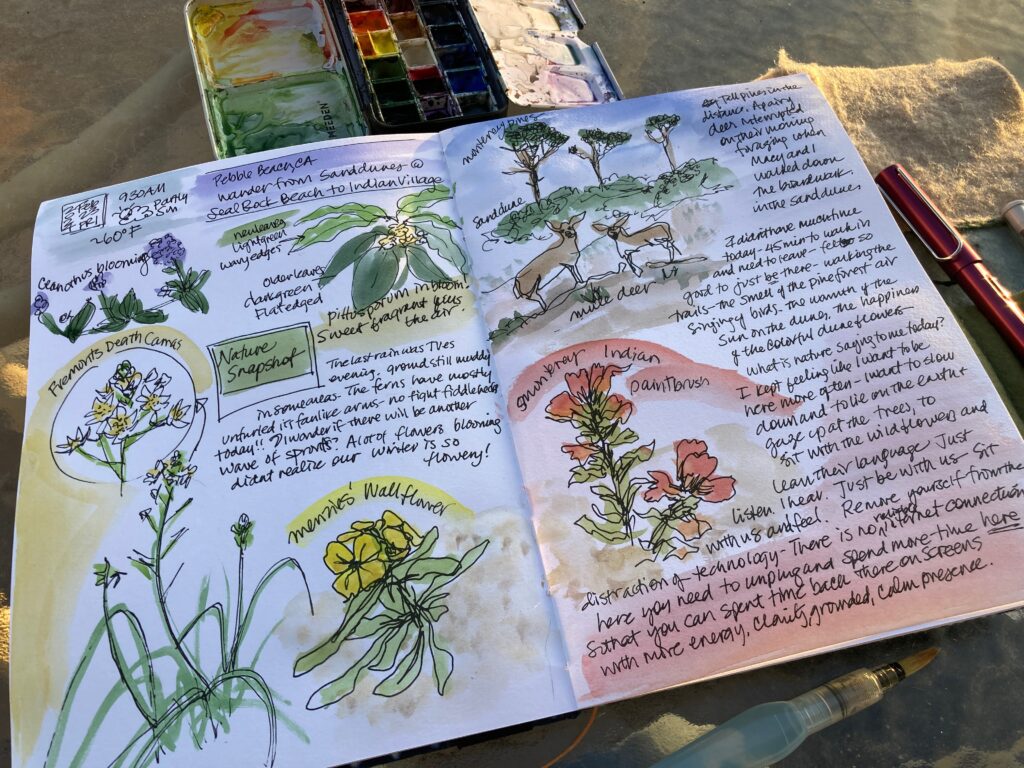
My general process
Sometimes, like this day, I don’t have the time to sketch in the moment, or I’m walking the dog or non-journalers are with me. In that case, I do an “after-the-walk” nature journaling page later when I come home.
I make some time to sketch from photos and memory, and jot down reflections of my walk.
🔴 First I identify the first subject by looking around. What is drawing my attention to it? Maybe its the way the branch sways in the breeze or color of a flower.
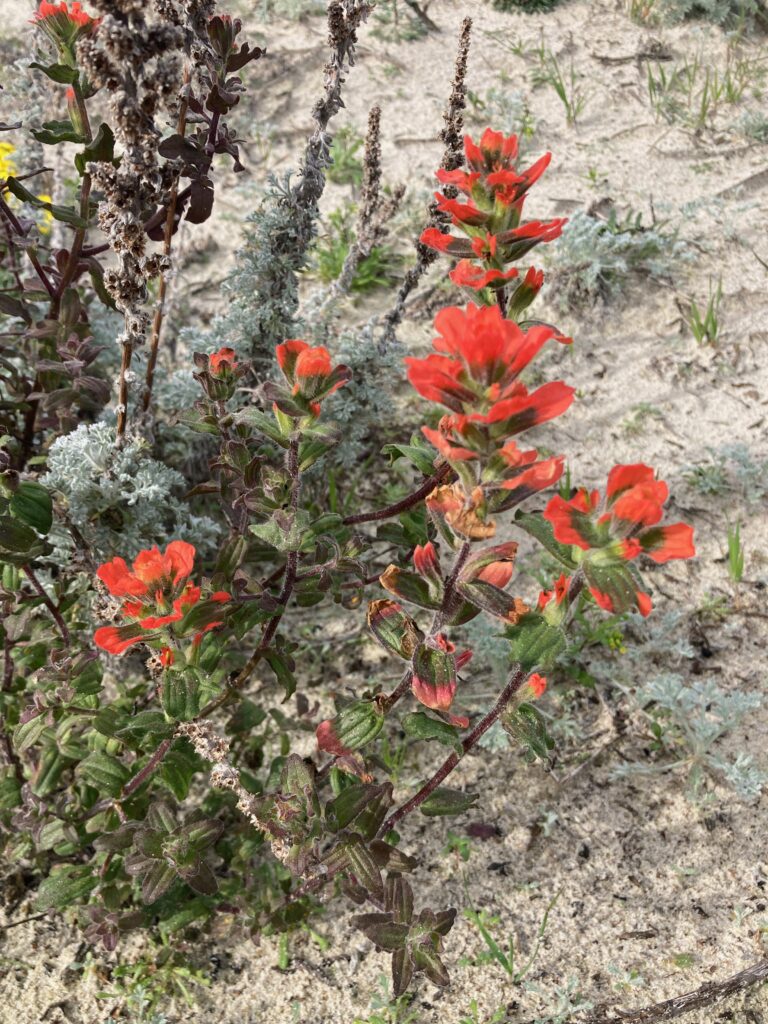

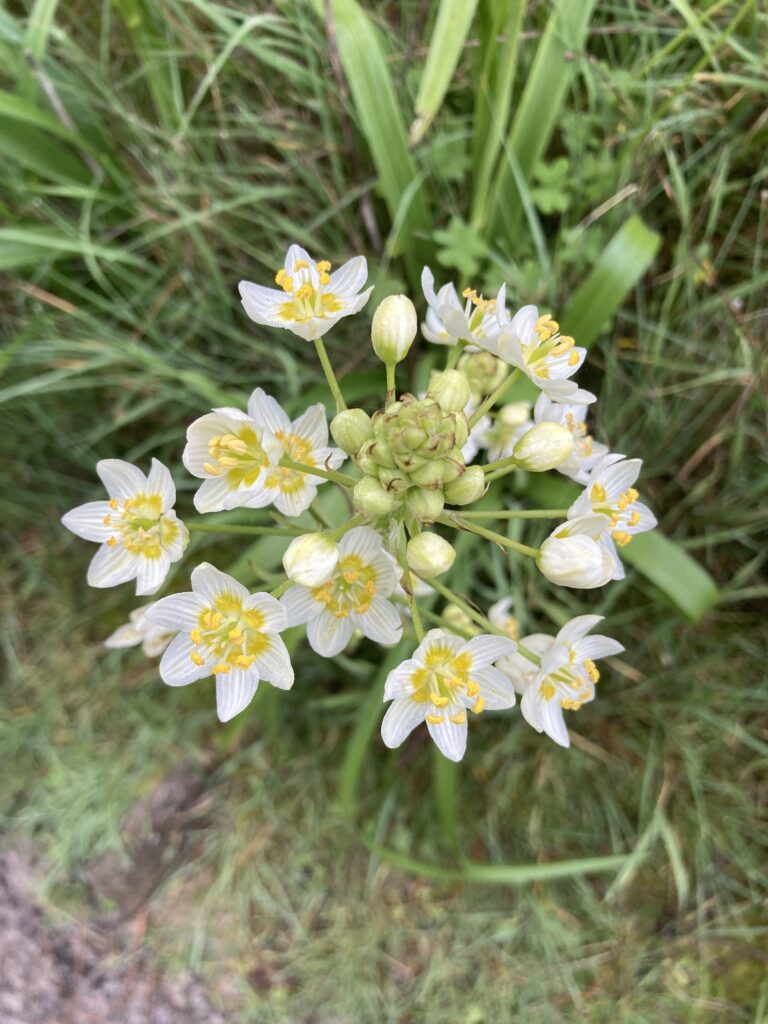
🟠 I walk nearer to it and pay intentional attention by drawing so that I can notice more closely. Drawing for seeing instead of drawing to make artwork. What do I notice while I’m drawing. Make note of what I’m seeing.
By slowing down and sitting with them so I match nature’s pace or frequency, and listen with an open heart and open senses.
🟡 What am I wondering about this subject? Jot down any curiosities I have– and the purpose is to stimulate a curious mind to allow me to learn more. I take some minutes to be in joyful wonder and journal what come up.
🟢Then, I ask what else is there, what else is nature saying to me?
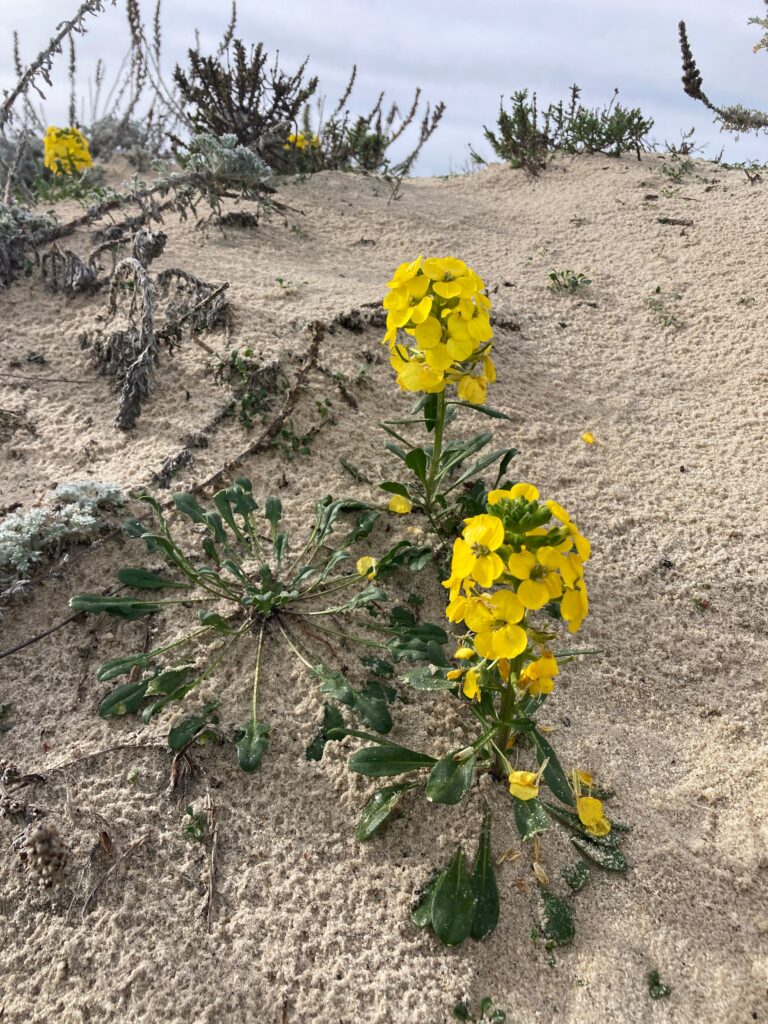
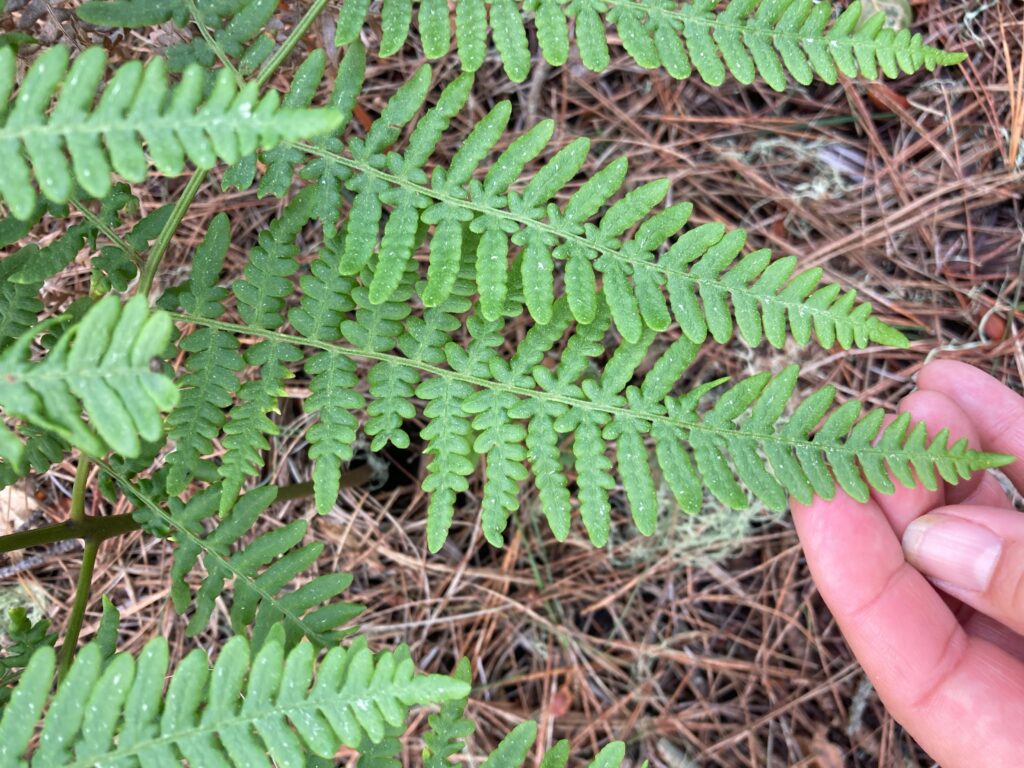
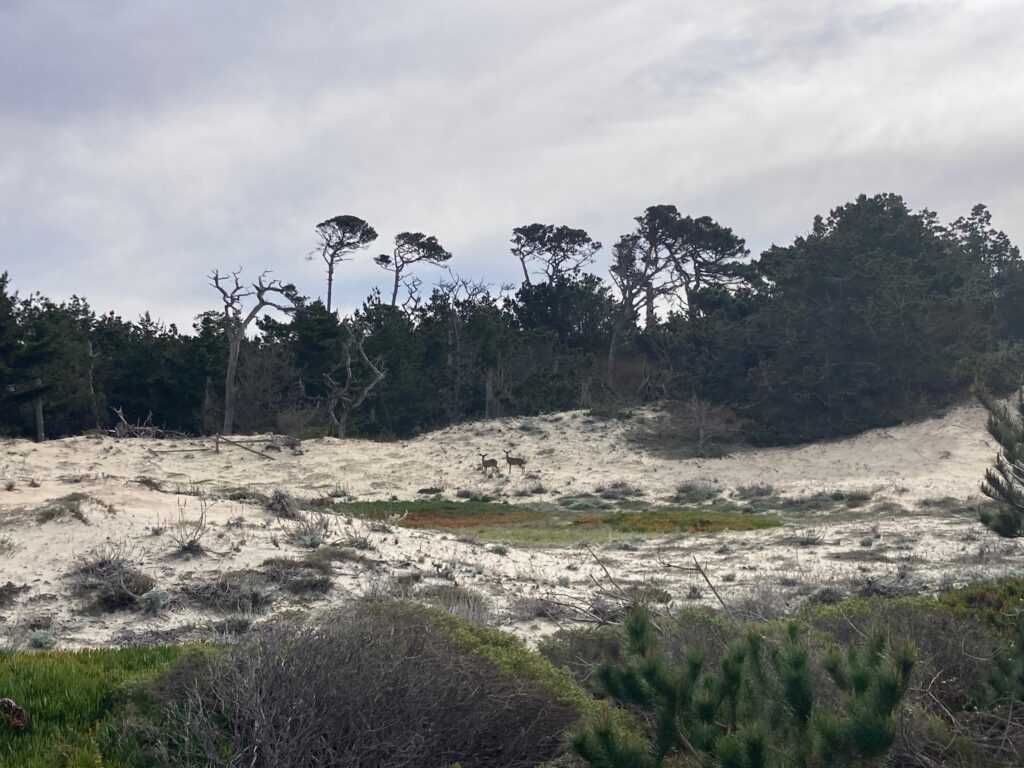
Tune into what nature is showing me in the moment.
I usually start with the first subject that draws my attention, then I move onto the the next thing that I notice, and the next. I like to use pen to sketch and write with, then add watercolor. I work quickly so as not to give my inner critic too much time to interfere!
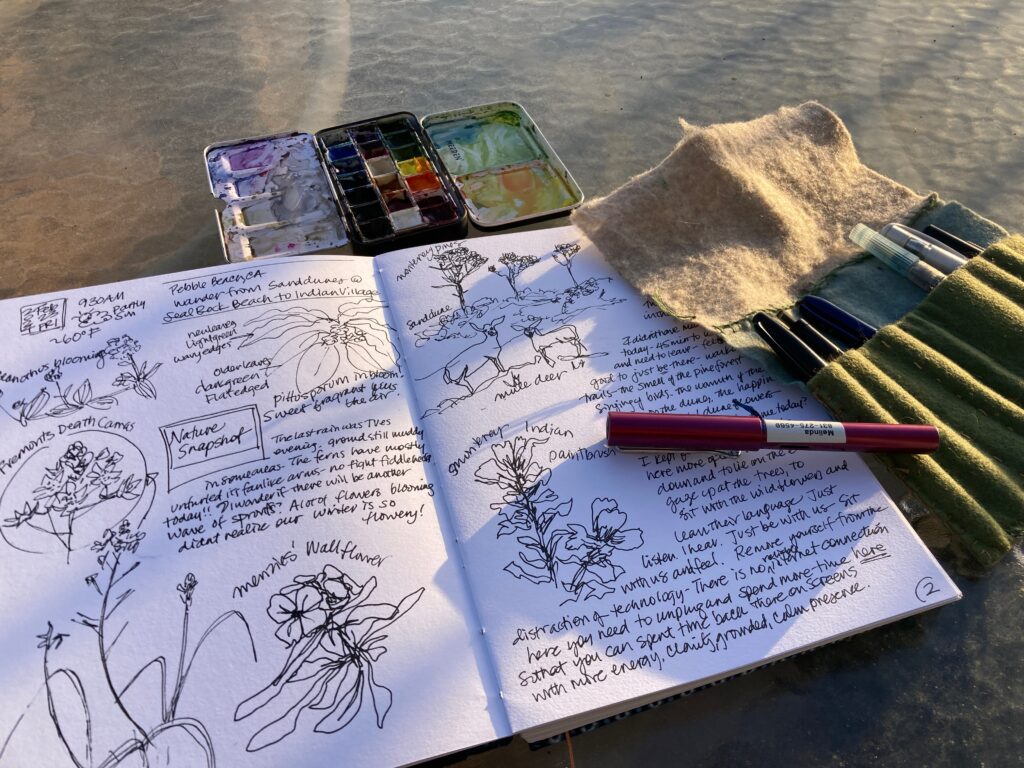
🔵 Writing
At some point, at the start or middle or end. I write the narrative of why I’m there. Or about what I’m experiencing physically with my senses, as well as what I perceive non-physically, like a feeling, thought or emotion.
🟣 Sometimes I pose a question for Nature and be open to receive the response.
Is there something else I can learn?
What else is the [ocean] wanting me to know?
How can I approach [this situation-fill in blank] in my life?
Connecting through coloring, co-creating
⚪️I connect more deeply with nature through the painting process– looking again at photos or in my memory of the colors. It can feel meditative to color (first– letting go of the idea of perfect color matching!) as I integrate what I am learning about this subject.
After the color of the plants and landscape are on the page, I add some fun. I allow my intuition to guide me– often it takes form of those ideas that pop into my head: “use red here” , “make a swash of color here”, “splatter paint here”, or “draw a frame here.”
This intuitive coloring combines 2 parts: 🎨
1 Skills and practice that I’ve developed (how to paint, how to add shadow, make things stand out with frames, adding splatter for texture, dry brush for fur or grass, etc). I tap into this knowledge that is always being added to.
2. Paying attention to my inner self— listening to the subtle cues or directions without judgement or second guessing. I’m continuously improving how my ability to be receptive.
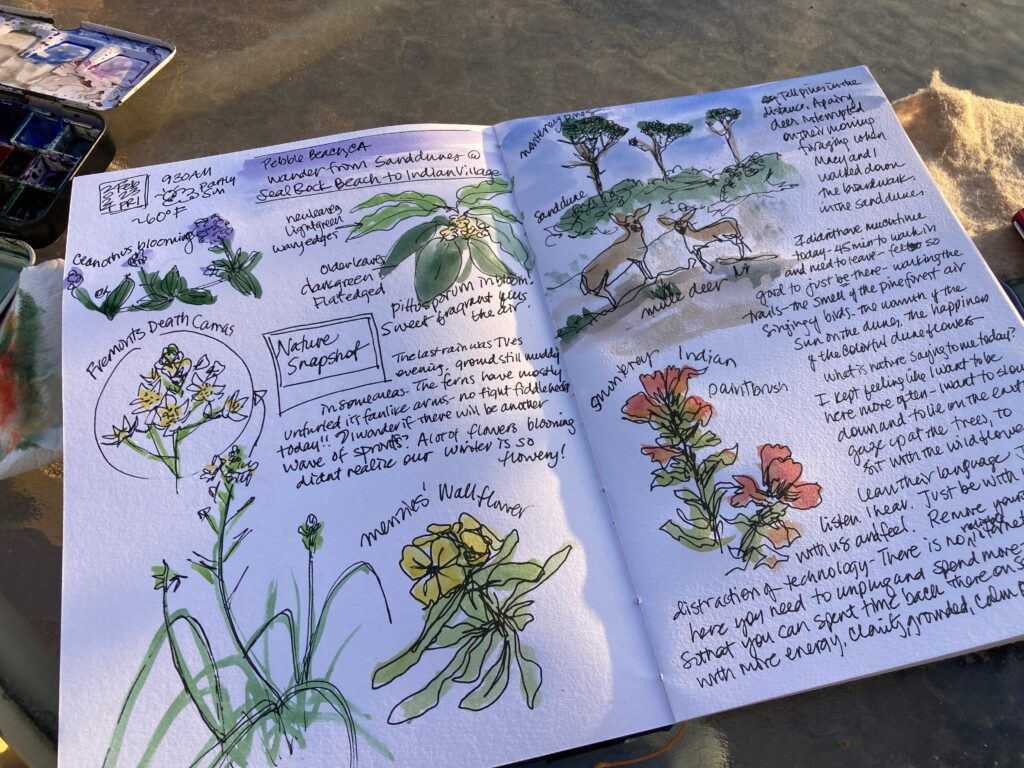
What ends up on the page is what’s co-created with nature. A beautiful page appears in steps and its about being present with the individual moments, with the nature subject, with listening to them, and listening to my intuition.
When I make a judgement that it doesn’t look good.
I approach my nature journaling as though each page is an experiment. I stay open to continue refining my ability to see, notice, wonder, draw, and receive. And sometimes the final page falls short and doesn’t look as good as I hoped. This is an easy trap to fall into because of my past conditioning about how painting and drawing needs to look good.
At these times I remind myself of my purpose– its not about making pretty paintings but being present with nature.
Or an alternative perspective: perhaps its highlighting an area of growth for me–like “I need to practice drawing animals more” or “there’s more improvement with drawing people”.
Drawing is a skill that is improved with practice. Even though my goal when journaling is not to make a super realistic picture or pretty page, I still like when the page is appealing to me in the end!
This page spread was completed in about 25 minutes- like I said, I don’t take a super long amount of time because I prefer to spend more time exploring. There is a balance between slowing down to be present, but moving quickly enough in my sketching so as not to get trapped by my inner critic!

So, now its your turn–You have permission
- You have permission to nature journal from photos. (easier to draw 2D photos instead of 3D)
- You have permission to experiment with drawing, painting, writing, etc.
- You have permission to be messy. (this can capture the essence of the moment!)
- You have permission do it imperfectly. (ditto from above)
- you have permission for the colors NOT to match. (you can add words to describe color)
- You have permission to give attention to the quiet inner voices that lead you.
Go out and try for yourself.
- Did you find this helpful?
- What did you discover in a nature?
- Did you gain any insights?